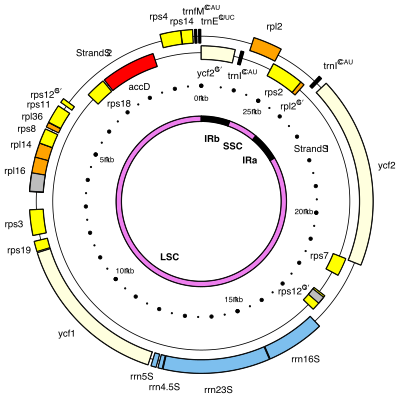Hydnora
| Hydnora | |
|---|---|

| |
| Hydnora africana | |
| Scientific classification | |
| Kingdom: | Plantae |
| Clade: | Tracheophytes |
| Clade: | Angiosperms |
| Clade: | Magnoliids |
| Order: | Piperales |
| Family: | Aristolochiaceae |
| Subfamily: | Hydnoroideae |
| Genus: | Hydnora Thunb. |
| Synonyms[1] | |
|
Aphyteia Ach. | |
Hydnora is a group of parasitic plants described as a genus in 1775.[2][3] It is native to Africa, Madagascar, and the Arabian Peninsula.[1][4][5]
Taxonomy[]
The following species are listed within the genus Hydnora:[1]
- A.Br. - Oman, Yemen, Saudi Arabia; S + C + SE + E Africa from Eritrea + Sudan to Namibia + KwaZulu-Natal
- Hydnora africana Thunb. - Angola, Namibia, Cape Province
- [6]Bolin & Musselman - Oman & Yemen
- Jum. & H.Perrier - Madagascar
- Beentje & Q.Luke - Kenya, Tanzania
- Hydnora triceps Drège & E.Mey. - Northern Cape Province, Namibia
- Hydnora visseri Bolin, E.Maass, & Musselman - Northern Cape Province, Namibia
Etymology[]
The genus name Hydnora derives from the ancient Greek ὕδνον, 'truffle',[7][8] because of the somatic structure of this root parasite.[9]
Genomics[]

One of the smallest plastid genomes among flowering plants has been found in the genus Hydnora.[11] As compared to the chloroplast genome of its closest photosynthetic relatives, the plastome of Hydnora visseri shows extreme reduction in both size (ca. 27 kilo base pairs) and gene content (24 genes appear to be functional).[10]
Ethnobotany[]
Other Hydnora species are known to be available in Southern African herbal markets in Mozambique[12] and South Africa.[13] In South Africa the Imbola yesiXhosa are reported to use a thin paste of the powdered Hydnora rhizome as a treatment for acne and other skin conditions.[14] In Uganda, the Hydnora spp. are reported to be used as food (fruits) and medicine (rhizomes) for diarrhea, hypertension, and diabetes,[15] though these claims have not been confirmed.
References[]
- ^ Jump up to: a b c Kew World Checklist of Selected Plant Families
- ^ Thunberg, Carl Peter. 1775. Kongliga Vetenskaps Academiens Handlingar 36: 69, [1].
- ^ Tropicos, Hydnora Thunb.
- ^ Beentje, H. & Luke, Q. (2002). Hydnoraceae. Flora of Tropical East Africa: 1-8.
- ^ Germishuizen, G. & Meyer, N.L. (eds.) (2003). Plants of Southern Africa: an annotated checklist. Strelitzia 14.: i-vi, 1-1231. National Botanical Institute, Pretoria.
- ^ BOLIN, JAY F.; LUPTON, DARACH; MUSSELMAN, LYTTON JOHN (2018-02-09). "Hydnora arabica (Aristolochiaceae), a new species from the Arabian Peninsula and a key to Hydnora". Phytotaxa. 338 (1). doi:10.11646/phytotaxa.338.1.8. ISSN 1179-3163.
- ^ Bailly, Anatole (1981-01-01). Abrégé du dictionnaire grec français. Paris: Hachette. ISBN 2010035283. OCLC 461974285.
- ^ Bailly, Anatole. "Greek-french dictionary online". www.tabularium.be. Retrieved 2017-01-24.
- ^ Gledhill, David (2008-03-06). The Names of Plants. Cambridge University Press. p. 206. ISBN 9780521866453.
- ^ Jump up to: a b Naumann, Julia; Der, Joshua P.; Wafula, Eric K.; Jones, Samuel S.; Wagner, Sarah T.; Honaas, Loren A.; Ralph, Paula E.; Bolin, Jay F.; Maass, Erika; Neinhuis, Christoph; Wanke, Stefan; dePamphilis, Claude W. (2016-02-01). "Detecting and Characterizing the Highly Divergent Plastid Genome of the Nonphotosynthetic Parasitic Plant Hydnora visseri (Hydnoraceae)". Genome Biology and Evolution. 8 (2): 345–363. doi:10.1093/gbe/evv256. ISSN 1759-6653. PMC 4779604. PMID 26739167.
- ^ List of sequenced plastomes: Flowering plants
- ^ Williams, V. L.; Falcão, M. P.; Wojtasik, E. M. (1 April 2011). "Hydnora abyssinica: Ethnobotanical evidence for its occurrence in southern Mozambique". South African Journal of Botany. 77 (2): 474–478. doi:10.1016/j.sajb.2010.09.010.
- ^ Williams, V. L.; Wojtasik, E. M.; Witkowski, E. T. F. (2011-04-01). "Ethno-ecological evidence for Hydnora abyssinica occurring in Johannesburg and Durban traditional medicine markets". South African Journal of Botany. 77 (2): 268–279. doi:10.1016/j.sajb.2010.08.005.
- ^ Dold, Tony (2005). "Imbhola yesiXhosa Traditional Xhosa cosmetics". Veld and Flora. September: 123–125.
- ^ NYAFUONO, JANE F.; BUKENYA, REMIGIUS Z.; ODYEK, OLWA (2000-01-01). "Taxonomy and Ethnobotany of Hydnora in Lake Mburo National Park (uganda)". Israel Journal of Plant Sciences. 48 (2): 99–103. doi:10.1560/NQBR-UN7F-464G-19WJ. ISSN 0792-9978.
- Piperales genera
- Parasitic plants
- Aristolochiaceae